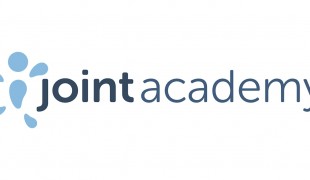- 3688
- 308
- 14
- 14
- 0
- Help Ukraine
About the solution
An ACL (anterior cruciate ligament – the main ligament through the centre of the knee which keeps the joint stable) injury used to be viewed as the dreaded curse for footballers, as a return to the game was not always guaranteed. Advancements in technology mean it is not the career death knell it once was, but there is still a 10 per cent re-injury rate and some players still don’t get back to the level they were at before.
Mackay’s method is a less traumatic alternative to traditional reconstruction: repairing the ligament as soon as possible and augmenting it with an internal brace (IB). “A ligament repair tries to retain all the natural tissue, so the injured ligament can heal again. The IB idea is that it protects the ligament so it is fully healed. Whereas a reconstruction is taking a part of the ligament from the hamstring to replace the damaged ligament.
“Why can’t we protect things and mobilise them while we heal?’. We do it with external braces. Why don’t we do it internally by matching the natural ligament? Don’t replace it, let it heal and just protect it.
“We’ve found that we can use a hybrid, which is a slightly reduced graft in size. We keep the stump of the damaged ligament so you’ve still got nerve supply and blood supply, and back it up with this internal brace. like a ribbon, but it significantly improves the strength of the reconstruction. We’ve also found recently that, with the addition of a second internal brace on the outside of the knee, you can reduce the risk of re-injury by a further third.
Recovery time was around a minimum of nine months to get back to playing, but former Aberdeen and Dundee United defender Mark Reynolds’ return was reduced to just four-and-a-half months courtesy of Mackay’s IB repair in 2018, while now-Rangers winger Scott Wright was fully recovered in the same timeframe after an ACL tear playing for Aberdeen the following year. Re-injury rate is a 1.1 per cent in five years, which was reduced considerably.
The IB was first devised as a concept by Mackay in 2011 and, in conjunction with leading US-based sports-surgery company Arthrex – which has applied the technique to 17 different areas of the body and taken it to 30 different countries – the number of surgeries to have been performed using his patented method has passed one million. Last year alone, 50 per cent of soft-tissue knee surgeons started to introduce the IB for reconstruction, and there are now 214 academic papers on its role in recovery and accelerated healing. The IB has been adopted by the US special forces, which has returned troops to free-fall parachute jumps just two-and-a-half weeks after ankle-ligament damage.
Adapted from: https://www.mackayclinic.co.uk/, https://theathletic.com/4076512/2023/01/11/gordon-mackay-internal-brace/...
https://youtu.be/W1yk10wJcn0
This solution shall not include mention to the use of drugs, chemicals or biologicals (including food); invasive devices; offensive, commercial or inherently dangerous content. This solution was not medically validated. Proceed with caution! If you have any doubts, please consult with a health professional.
DISCLAIMER: This story was written by someone who is not the author of the solution, therefore please be advised that, although it was written with the utmost respect for the innovation and the innovator, there can be some incorrect statements. If you find any errors please contact the patient Innovation team via info@patient-innovation.com
-
-
347
-
0
-
3703

Joint Academy- how a dad and his son are changing the treatment for osteoarthritis
WALKING: Walking
WALKING WITH A WALKING AID: Walking with a walking aid
BODY BALANCE: Maintaining body balance
Arthritis
App (Including when connected with wearable)
Difficulty walking or moving
Muscle weakness
Limited range of motion
Muscle pain or stiffness
Loss of muscle coordination
Muscle cramps or spasms
Joint deformity
Joint redness or warmth
Swelling or inflammation
Muscle twitching
Difficulty standing from a seated position
Difficulty getting up from the floor
Fatigue
Numbness or tingling in the extremities
Back pain
Frequent falls
Joint pain or swelling
Restoring mobility
Managing pain
Promoting self-management
Preserving Organ Function
Recovering from Traumatic Injuries
Maintaining Balance and Mobility
Restoring Blood Circulation
To improve Treatment/Therapy
Preventing (Vaccination, Protection, Falls, Research/Mapping)
Raise awareness
Caregiving Support
General and Family Medicine
Internal Medicine
Orthopedics
Physical Medicine and Rehabilitation
Sports Medicine
Vascular Surgery
United Kingdom
-
-
-
463
-
1
-
7451

BWCrutches
WALKING: Walking
WALKING WITH A WALKING AID: Walking with a walking aid
Basketball
Bone Disorders (Decalcification, Bone Deformity, Bone Fracture, Bone Infection)
Ankle Deformity
Walking Aid (wheelchair/walker/crutches)
Assistive Daily Life Device (to help ADL)
Difficulty walking or moving
Muscle weakness
Limited range of motion
Muscle pain or stiffness
Joint deformity
Joint redness or warmth
Difficulty bearing weight
Joint pain or swelling
Restoring mobility
Managing pain
Preventing (Vaccination, Protection, Falls, Research/Mapping)
Orthopedics
United States
-
-
-
498
-
0
-
7516

Doctor created an orthotics to help with foot pain
WALKING: Walking
Urban exploration
Hiking
Foot Deformity
Body-Worn solutions (Clothing, accessories, shoes, sensors...)
Assistive Daily Life Device (to help ADL)
Difficulty walking or moving
Muscle weakness
Limited range of motion
Muscle pain or stiffness
Muscle cramps or spasms
Joint deformity
Joint redness or warmth
Swelling or inflammation
Difficulty bearing weight
Muscle twitching
Difficulty getting up from the floor
Numbness or tingling in the extremities
Joint pain or swelling
Restoring mobility
Regaining sensory function
Managing pain
Preserving Organ Function
Managing Neurological Disorders
Recovering from Traumatic Injuries
Maintaining Balance and Mobility
To improve Treatment/Therapy
Orthopedics
Rheumatology
United States
-
 en
en